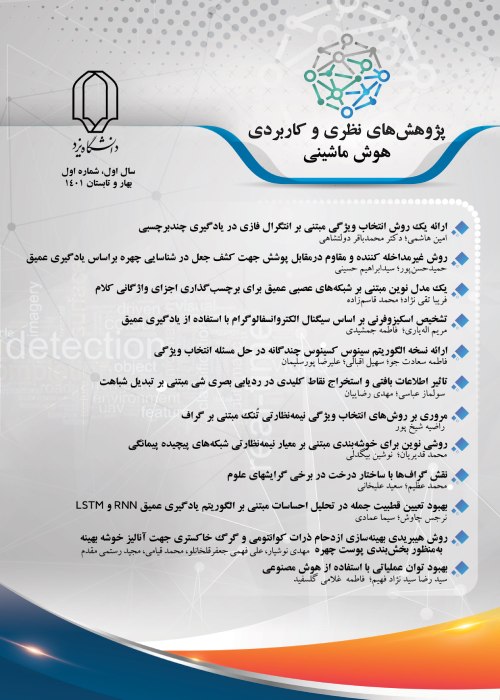A review on graph-based semi-supervised sparse feature selection methods
Article Type:
Research/Original Article (دارای رتبه معتبر)
Abstract:
In some real-world applications, there is high-dimensional data which has led to many computational challenges. Feature selection is an effective technique for data dimensionality reduction, which simplifies the model and improves its performance by selecting the appropriate subset of features. In many of these applications, labeling of data is costly and time consuming, leaving little labeled data available and large amounts of unlabeled data available. In such applications, semi-supervised feature selection methods perform the feature selection process using the information of labeled data, and the distribution and geometric structure of labeled and unlabeled data. In most semi-supervised feature selection methods, a neighborhood graph is created and the importance of features is evaluated via their ability to maintain the geometric structure of the graph. In classical graph-based semi-supervised feature selection methods, the features are evaluated one by one and the correlation between features is not considered in feature selection process. To overcome this problem, sparse feature selection methods have been presented which consider the correlation between features, and calculate the optimal sparse transformation matrix for feature selection. In this paper, we investigate the semi-supervised learning methods, and review the graph-based semi- supervised sparse feature selection methods which select the appropriate features using the graph created by the labeled and unlabeled data, and the sparse regularization term. These methods solve the problem of classical semi-supervised methods by considering the correlation between features, create a neighborhood graph using the labeled and unlabeled data, calculate the graph Laplacian matrix, and compute the optimal sparse transformation matrix for feature selection.
Keywords:
Language:
Persian
Published:
Journal of Applied and Basic Machine Intelligence Research, Volume:1 Issue: 1, 2022
Pages:
73 to 87
https://magiran.com/p2521610


